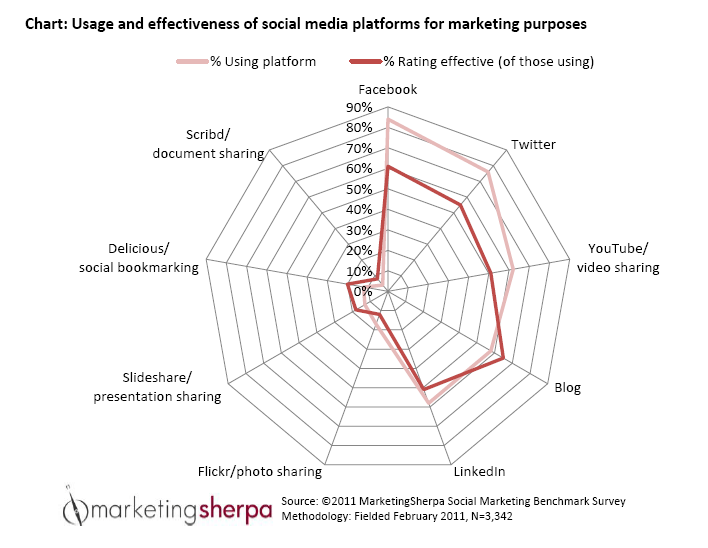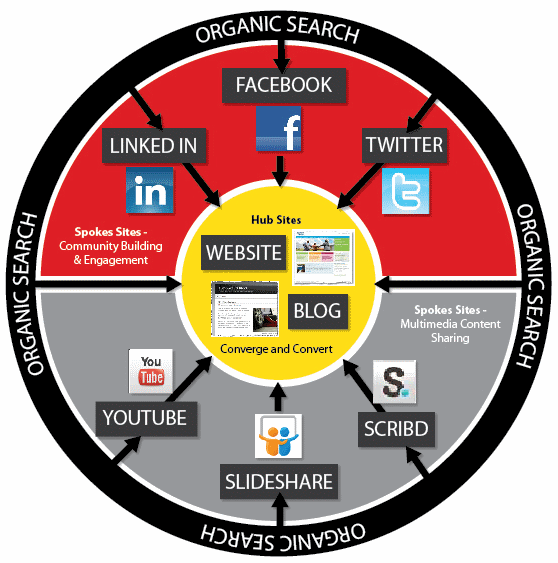Social Media Platform Selection: Keep your eye on the bigger picture
The news of Facebook’s recent IPO has mostly focused on technical glitches at NASDAQ. But, one question sits in the back of many marketers’ minds: Is this a sign that the social network will not continue its market dominance?
After all, we’ve seen the rise and fall of sites like Friendster and MySpace, along with the constant emergence of new social media platforms like Google+, Instagram and Pinterest.
So, in the midst of all this change, what is the biggest factor you should keep in mind when exploring social media platforms?
Not the social media platform itself, according to Kaci Bower, senior research analyst, MECLABS Content Group, and author of MarketingSherpa’s 2012 Inbound Marketing Handbook. Kaci suggests you focus on your bigger inbound marketing strategy and architecture rather than relying on tying marketing to any one platform, even if it does have more than 800 million different users.
A strategic approach can give you a distinct competitive advantage
Integrating inbound tactics is the marketing equivalent of avoiding sugar and exercising every day, Kaci claims.
“The vast majority of marketers agree it’s critical, but a much smaller percentage follow through,” she says, citing MarketingSherpa’s 2011 Social Marketing Benchmark Report. “Seventy-six percent of marketers believe integrating SEO and social media is essential, but only 47% are actually doing it.
“A 30-point difference is huge,” continues Kaci. “It indicates the challenge of inbound marketing integration — it’s far easier to give it lip service than execute it.”
Lost in the noise
She suspects that is due to the massive amounts of information in the marketplace on SEO, social media and content creation. Consider this graphic that illustrates the complexity of the social media landscape by showing the huge amount of social media marketing and social networking tools and platforms.
Of course, you don’t have to use everything. Just use what works best for your company. As you can see in this chart from the Inbound Marketing Handbook, usage and effectiveness do not always consistently match. For example, two of the most hyped social media platforms – Facebook and Twitter – showed significantly more usage than effectiveness. Meanwhile, blogs may be more effective than many marketers realize.
So, don’t focus solely on the social platform; instead synchronize that social platform with your search and content marketing initiatives. You want to create a hub-and-spoke architecture that drives your leads to a conversion point.
This inbound marketing architecture is built on three levels:
• The foundation of the architecture – organic search.
• The social media spoke sites for community building, engagement and content sharing.
• The hub sites for the convergence and conversion of inbound traffic.
“The objective of the inbound marketing architecture is to systematically direct the flow of online interactions from search inquires and social media engagement to lead capture and customer conversion,” Kaci says. “The hub and spoke architecture achieves this.”
The high cost of lip service
Kaci says that marketers cannot afford to continue merely giving lip service to inbound marketing integration.
“Consumers are initiating the buying cycle through searching the Internet, perusing social media and networking with colleagues. By the time they contact a salesperson, they’re much closer to a decision,” she explains. “Inbound marketing cost effectively makes it easier for you to raise the visibility of your products and services, giving you an opportunity to educate and inform, and sets you apart from the competition. Companies that become expert at inbound marketing will powerfully differentiate themselves in their marketplace.”
She points out, however, that marketers must be patient.
“Success doesn’t happen overnight; that’s why you want to be in the game and be strategic as early as possible,” she says. “Right now, most marketers are not taking these steps to create strategic, cohesive inbound marketing, and that means there’s incredible opportunity for the marketers who do embrace it. Consider the words of Brent Leary, Co-founder of CRM Essentials: “The attention economy is not growing, which means we have to grab the attention that someone else has today.”
Related Resources
Marketing Research Chart: Inbound lead sources more important to marketers
B2B Marketing: A discussion about integrating mobile, email and social
MarketingSherpa Inbound Marketing Newsletter
Inbound Marketing: How to pull in customers without pushing ads
Categories: Social Networking Evangelism Community Facebook, Inbound Marketing, Search Marketing, social media marketing, Twitter











